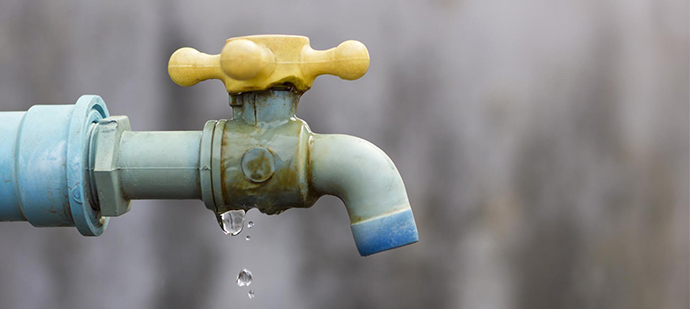Just how to Check If Your Home Has a Concealed Leakage
Just how to Check If Your Home Has a Concealed Leakage
Blog Article
What're your thoughts concerning Locating water leaks?

Early detection of dripping water lines can mitigate a possible calamity. Aside from conserving you money, it will certainly lessen the irritation and also frustration. The minute you locate a leakage, calling your plumber for fixings is the very best remedy. Some little water leakages might not be noticeable. If you can not detect it with your naked eyes, right here are some hacks that aid.
1. Check Out the Water Meter
Every residence has a water meter. Inspecting it is a surefire way that helps you uncover leakages. For beginners, switch off all the water sources. Ensure no person will flush, make use of the tap, shower, run the washing device or dishwashing machine. From there, go to the meter and watch if it will certainly change. Because no person is using it, there must be no movements. That suggests a fast-moving leakage if it relocates. Likewise, if you spot no changes, wait an hour or 2 and also check back again. This implies you may have a slow-moving leak that can even be below ground.
2. Examine Water Intake
If you identify abrupt modifications, regardless of your intake being the exact same, it implies that you have leakages in your plumbing system. An unexpected spike in your costs indicates a fast-moving leak.
A stable rise every month, also with the exact same behaviors, shows you have a slow leakage that's likewise gradually rising. Call a plumber to thoroughly inspect your residential property, especially if you really feel a warm area on your flooring with piping underneath.
3. Do a Food Coloring Examination
30% comes from commodes when it comes to water usage. Test to see if they are running correctly. Drop specks of food color in the container and also wait 10 mins. There's a leak between the tank as well as dish if the shade somehow infiltrates your dish throughout that time without flushing.
4. Asses Outside Lines
Do not fail to remember to examine your outside water lines as well. Test faucets by connecting a yard tube. Needs to water permeate out of the link, you have a loose rubber gasket. Change this as well as ensure all connections are tight. If you have actually obtained an automatic sprinkler, it will certainly help get it expertly analyzed and also maintained every year. One little leakage can throw away lots of water and spike your water expense.
5. Evaluate the circumstance as well as examine
Property owners must make it a behavior to check under the sink counters and also even inside cupboards for any type of bad odor or mold and mildew development. These 2 red flags suggest a leakage so timely attention is needed. Doing regular evaluations, also bi-annually, can save you from a major issue.
If you know your house is currently old, maintain a watchful eye on your heating units, hose pipes, pipelines and so on. Check for discolorations and compromising as many devices and also pipelines have a life expectancy. They will likewise naturally wear away as a result of tear and also put on. If you think dripping water lines in your plumbing system, do not wait on it to escalate. Call a specialist plumber as soon as possible so you don't end up with a horrible mess in your home.
Early detection of leaking water lines can reduce a possible disaster. Some tiny water leakages may not be noticeable. Examining it is a guaranteed method that helps you uncover leaks. One tiny leak can lose loads of water and also spike your water costs.
If you believe dripping water lines in your plumbing system, do not wait for it to intensify.
WARNING SIGNS OF WATER LEAKAGE BEHIND THE WALL
PERSISTENT MUSTY ODORS
As water slowly drips from a leaky pipe inside the wall, flooring and sheetrock stay damp and develop an odor similar to wet cardboard. It generates a musty smell that can help you find hidden leaks.
MOLD IN UNUSUAL AREAS
Mold usually grows in wet areas like kitchens, baths and laundry rooms. If you spot the stuff on walls or baseboards in other rooms of the house, it’s a good indicator of undetected water leaks.
STAINS THAT GROW
When mold thrives around a leaky pipe, it sometimes takes hold on the inside surface of the affected wall. A growing stain on otherwise clean sheetrock is often your sign of a hidden plumbing problem.
PEELING OR BUBBLING WALLPAPER / PAINT
This clue is easy to miss in rooms that don’t get much use. When you see wallpaper separating along seams or paint bubbling or flaking off the wall, blame sheetrock that stays wet because of an undetected leak.
BUCKLED CEILINGS AND STAINED FLOORS
If ceilings or floors in bathrooms, kitchens or laundry areas develop structural problems, don’t rule out constant damp inside the walls. Wet sheetrock can affect adjacent framing, flooring and ceilings.
https://www.servicemasterbyzaba.com/blog/how-to-detect-water-leakage-in-walls/

I was made aware of that article on Leaking water lines through a good friend on a different site. You should set aside a second to distribute this write-up if you enjoyed it. I truly appreciate reading our article about Locating water leaks.
Report this page